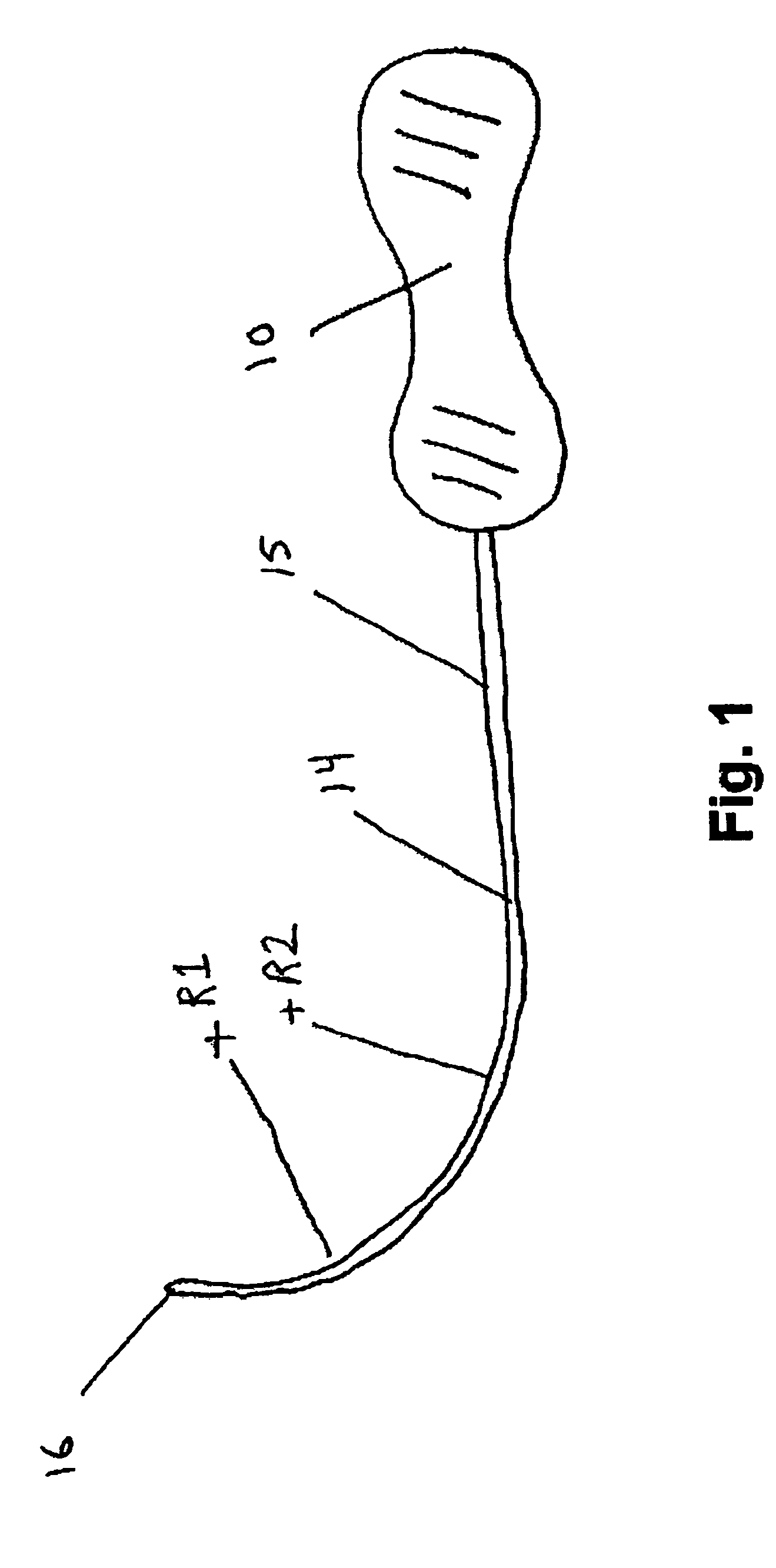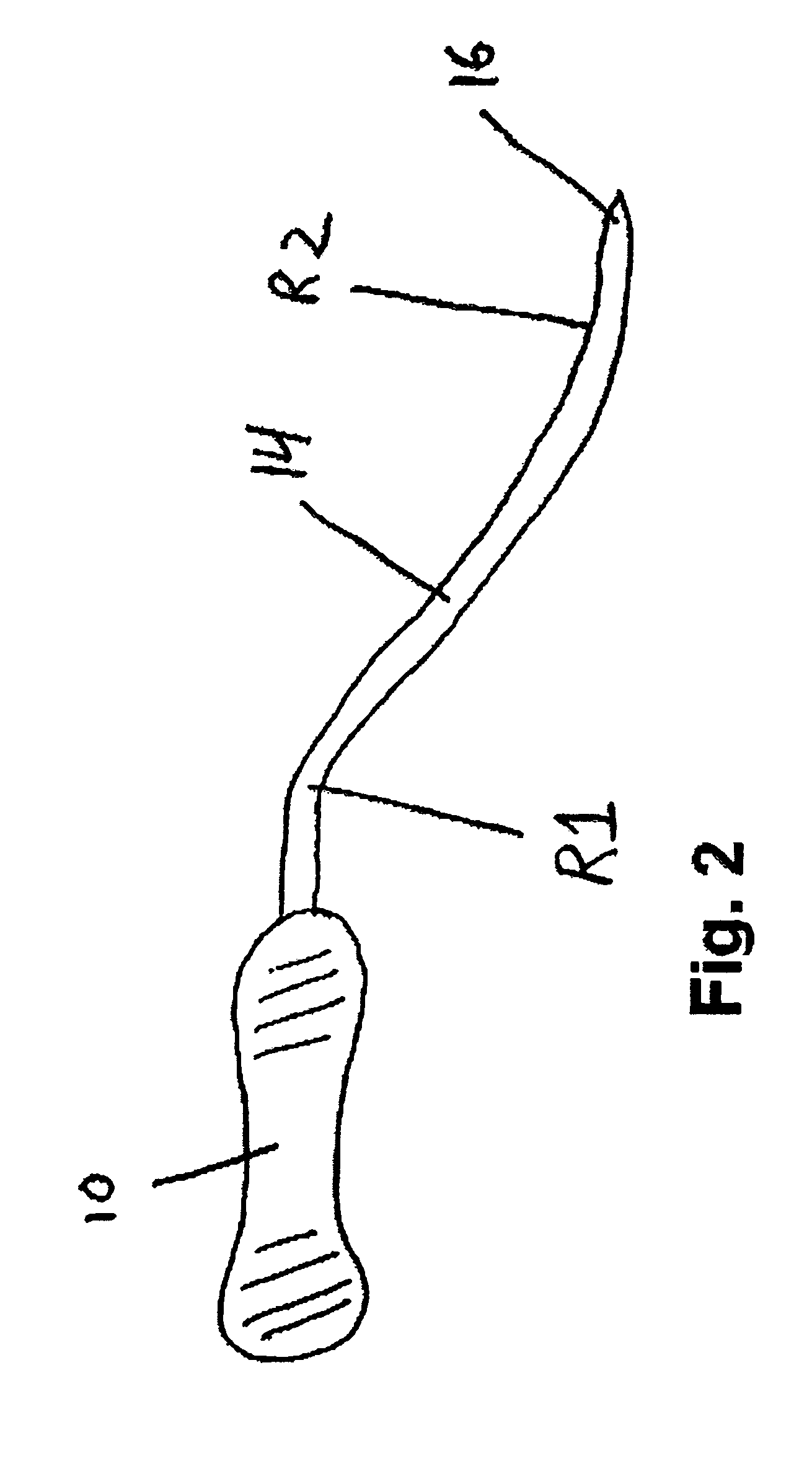Method and apparatus for treating pelvic organ prolapse
a pelvic organ and prolapse technology, applied in the field of urogenital conditions, can solve the problems of increasing abdominal pressure, accelerating prolapse, and failure of the muscles to keep the pelvis floor supported, and achieve the effect of improving suture retention and facilitating and more secure suture attachmen
- Summary
- Abstract
- Description
- Claims
- Application Information
AI Technical Summary
Benefits of technology
Problems solved by technology
Method used
Image
Examples
Embodiment Construction
[0064]Referring now to the drawings, wherein like reference numerals designate identical or corresponding parts throughout the several views, FIG. 1 shows a needle 14 and handle 10 suitable for use in the present invention. Needle 14 terminates in a tip 16. Needle 14 comprises a generally straight section 15 near handle 10. In one embodiment, the straight section 15 shown in FIG. 1 is between about 4 inches and about 8 inches, preferably between about 5 inches and about 7 inches, more preferably between about 5.5 inches and about 6.5 inches.
[0065]The portion of needle 14 between straight section 15 and tip 16 includes a multi radii bend defined by a first radius R1 and a second radius R2, distinct from the first radius. The first radius R1 is generally between about 2 inches and about 4 inches, preferably between about 2.5 inches and about 3.5 inches. The second radius R2 is generally larger than R1. In one embodiment, R2 is between about 4 inches and about 6 inches, preferably betw...
PUM
 Login to View More
Login to View More Abstract
Description
Claims
Application Information
 Login to View More
Login to View More - R&D
- Intellectual Property
- Life Sciences
- Materials
- Tech Scout
- Unparalleled Data Quality
- Higher Quality Content
- 60% Fewer Hallucinations
Browse by: Latest US Patents, China's latest patents, Technical Efficacy Thesaurus, Application Domain, Technology Topic, Popular Technical Reports.
© 2025 PatSnap. All rights reserved.Legal|Privacy policy|Modern Slavery Act Transparency Statement|Sitemap|About US| Contact US: help@patsnap.com



